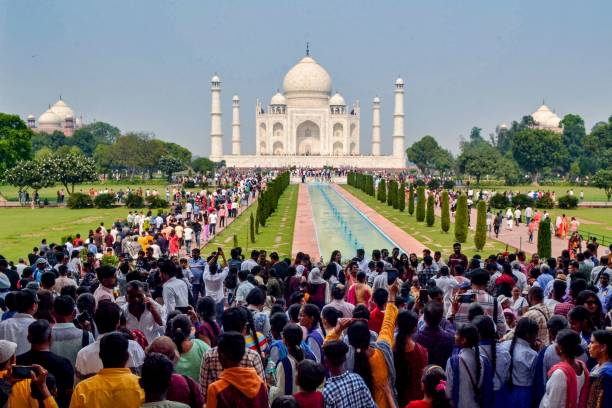India’s population may have already overtaken China’s, estimates show
India’s population climbed to 1.417 billion in the year ending 2022, according to estimates from the World Population Review, surpassing China by over 5 million

Your support helps us to tell the story
From reproductive rights to climate change to Big Tech, The Independent is on the ground when the story is developing. Whether it's investigating the financials of Elon Musk's pro-Trump PAC or producing our latest documentary, 'The A Word', which shines a light on the American women fighting for reproductive rights, we know how important it is to parse out the facts from the messaging.
At such a critical moment in US history, we need reporters on the ground. Your donation allows us to keep sending journalists to speak to both sides of the story.
The Independent is trusted by Americans across the entire political spectrum. And unlike many other quality news outlets, we choose not to lock Americans out of our reporting and analysis with paywalls. We believe quality journalism should be available to everyone, paid for by those who can afford it.
Your support makes all the difference.India may have already outstripped China of the long-held title of the world’s most populous nation, a milestone that adds to the urgency of creating more jobs to avoid economic fallout.
India’s population climbed to 1.417 billion in the year ending 2022, according to estimates from the World Population Review, surpassing China by over 5 million.
China’s population stood at 1.412 billion, shrinking first time in decades last year as its birthrate plunged, official figures revealed on Tuesday.
The National Bureau of Statistics reported that the country had 850,000 fewer people at the end of 2022 than the previous year. The tally includes only the population of mainland China, excluding Hong Kong and Macao as well as foreign residents.
The significant shift in the Asian giant’s demography will have major implications for the two largest growing economies which have more than 1.4 billion residents each.
In a press conference on Tuesday, the spokesperson of the Chinese Embassy in India counsellor Wang Xiaojian said both countries should benefit from a“demographic dividend” when asked about the new statistics.
“China and India both have a large population and rich labour resources. It is important for both countries to benefit wisely from the demographic dividend for development and rejuvenation and make a greater contribution to the future of humanity,” he said.
The population boom has created urgency for India to generate more jobs to ensure growth catalysed by its huge young population under the age of 30.
According to Organisation for Economic Cooperation and Development’s 2021 data, India’s working-age population stands at over 900 million.
The United Nations estimated last year that the population of the world would reach 8 billion on 15 November 2023 and that India will surpass China as the world’s most populous nation.
But the milestone appears to have been reached much earlier as India’s population is already 1.423 billion, as of 18 January, according to WPR.
India, which has not released any data, scheduled its last census for 2022 but it was postponed amid the Covid pandemic.
Following India’s rapid economic growth before Covid pandemic and its recovery post-pandemic, India is poised to overtake Japan and Germany to become the world’s third-largest economy, according to S&P Global and Morgan Stanley.
But ensuring that growth would become a challenge and India’s ballooning population a liability if joblessness in the country continues to grow.
According to 2021 data from World Bank, India’s labour force participation, the number of the active workforce and people looking for work, stood at 46 per cent - the lowest in Asia.
China’s stood at 68 per cent in the same year.
At the same time, India’s unemployment rate in December was at 8.3 per cent, according to the Centre for Monitoring Indian Economy (CMIE), an independent think tank in Mumbai.
Last year, hundreds of thousands of Indian army aspirants protested against Indian prime minister, Narendra Modi government’s move to recruit soldiers for a four-year term, making 75 per cent of recruits ineligible for pensions.
“A lot of this growth is jobless growth,” Raghuram Rajan, the former governor of the Reserve Bank of India, told NDTV last year.
“Jobs are essentially task one for the economy. We don’t need everybody to be a software programmer or consultant but we need decent jobs,” he added.
Join our commenting forum
Join thought-provoking conversations, follow other Independent readers and see their replies
Comments